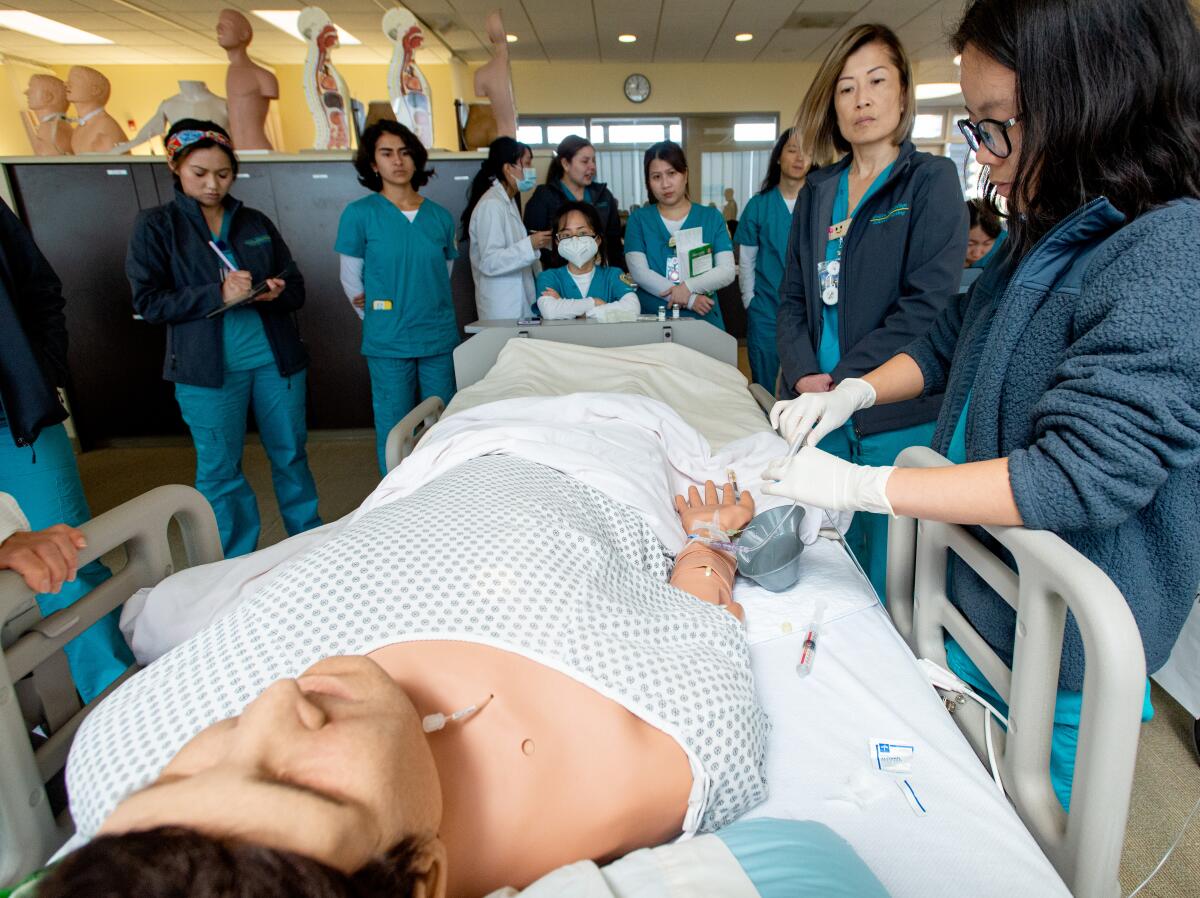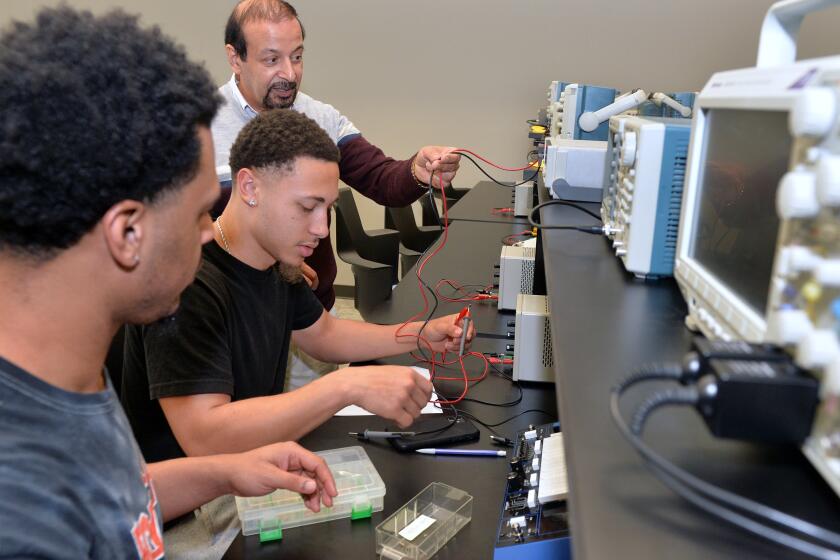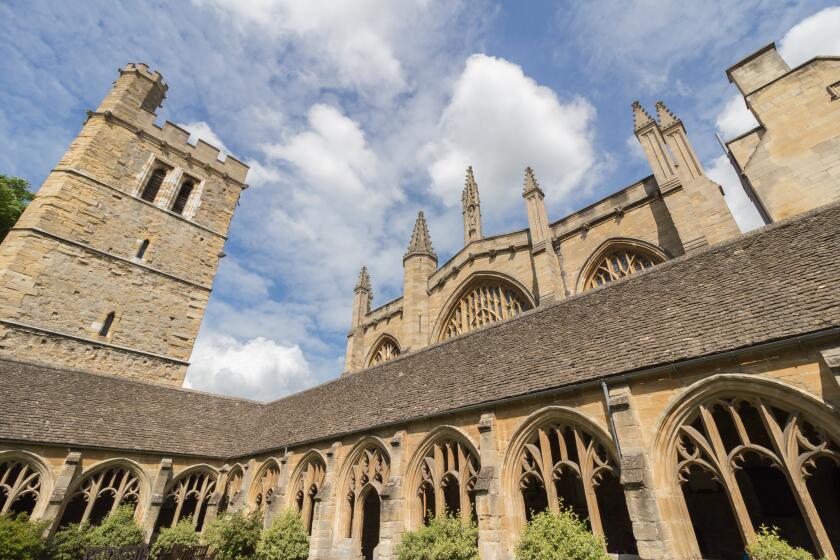Commentary: California needs to break down walls between CSU and community colleges

- Share via
In a state that desperately needs more nurses, the Legislature is expected to approve a commonsense pilot program to let 15 community colleges offer bachelor’s degrees in nursing. This would make it cheaper and easier for nursing students to get their degree and allow them to get good jobs sooner.
As small and reasonable as the change would be, Senate Bill 895 sent a jolt through the California State University administration because it would slightly disturb the Master Plan for Higher Education.
The division of postsecondary education laid out in the master plan has been clear up to now: Four-year degrees have been the provenance of Cal State and the University of California, with UC as the main research and doctorate producer. Community colleges were for two-year degrees and vocational certificates; they could offer a bachelor’s only in fields such as respiratory science and mortuary service that had been bypassed by the university systems. Cal State officials see SB 895 as a crack in that historical wall, and are against the change.
Why do universities charge future teachers the same rate as future engineers?
The Legislature should pass this bill, but then it should start dismantling the wall between the community colleges and four-year universities. If anything, SB 895 aims too low. The time has come to rethink aspects of the master plan, which is more than half a century old, to create a more flexible higher education plan.
California works hard at making college affordable and increasing graduation rates, with some success. Despite its efforts, too many students don’t complete their education, wasting students’ and taxpayers’ time and money. According to a report by the Public Policy Institute of California, less than 20% of community college students who start out planning to transfer to a four-year school actually do so within four years. Transfer rates are especially low for rural students, who often don’t have a nearby Cal State to attend.
Among students who start their college careers at a Cal State campus, nearly 40% don’t graduate within six years, according to its own 2023 report.
Data science is a worthwhile course for future college students, as is statistics. Such courses, with their real-life applications, make math more appealing.
For the record:
10:22 a.m. July 23, 2024An earlier version of this commentary incorrectly identified the title of the author’s book. It is “Rethinking College: A Guide to Thriving Without a Degree” not “Rethinking Education: A Guide to Thriving Without a Degree.”
In the course of researching my forthcoming book, “Rethinking College: A Guide to Thriving Without a Degree,” about how people can and do thrive without a bachelor’s degree, I learned that the general perception about higher education is disturbingly binary: The idea that you either have a bachelor’s degree or you’re second-rate is so untrue and harms teenagers and young adults. There are a few innovative colleges that are doing things differently, whether through degrees oriented around practical experience or by offering flexible degrees.
One school that’s gotten the message about what many of today’s students need is Utah State University Eastern. It offers a wide range of vocational certificates, associate degrees and majors for a bachelor’s degree, and extends into graduate degrees as well.
Unlike at most community colleges, Utah State University Eastern students generally live on campus. They might start out looking to get a bachelor’s degree, or they might be interested in a short-term program. In any case, they all begin within the associate’s degree program.
You might think getting into, say, Oxford University would be about as difficult and expensive as getting into Harvard or Stanford. You’d be wrong.
The school has more success getting bachelor’s-bound students over the hump between the first two community college years and their third year because they don’t have to change schools, so the courses are automatically accepted for “transfer” and counselors can more easily guide students. Plus, having been at the school for two years, students feel more at home. They know their way around, they’ve made friends and are familiar with professors. They get to see and interact with juniors and seniors. About 60% of students continue on to a third year at the school.
And those who find that a four-year degree isn’t for them can stick with an associate’s degree or a vocational certificate in fields as broad as 3D printing and environmental policy. They haven’t come out of a four-year school with nothing to show for it.
It takes financial support from the state to make this happen. Attending the Utah university costs much less than attending most four-year schools — about $4,000 a year for state residents and $12,000 for nonresidents. Room and board adds up to about $7,000 a year. Financial aid is available.
It’s not that California should completely redo its model along these lines. Recasting the system would be prohibitively expensive and possibly unworkable. But instead of creating a measly handful of bachelor’s degrees in just one field at community colleges, state leaders should be bolder and more ambitious about redesigning the master plan.
What should matter above all else is delivering meaningful education that’s accessible to the greatest number of students — and giving them the flexibility to earn a degree or certificate that will help them get a start on their careers, even if that’s not a bachelor’s degree. That means breaking down at least some of the walls between community colleges and Cal State, allowing community colleges to offer many of the same bachelor’s degrees, as well as setting up Cal State and UC to award associate degrees when students can’t make it all the way to a four-year degree.
More to Read
A cure for the common opinion
Get thought-provoking perspectives with our weekly newsletter.
You may occasionally receive promotional content from the Los Angeles Times.














